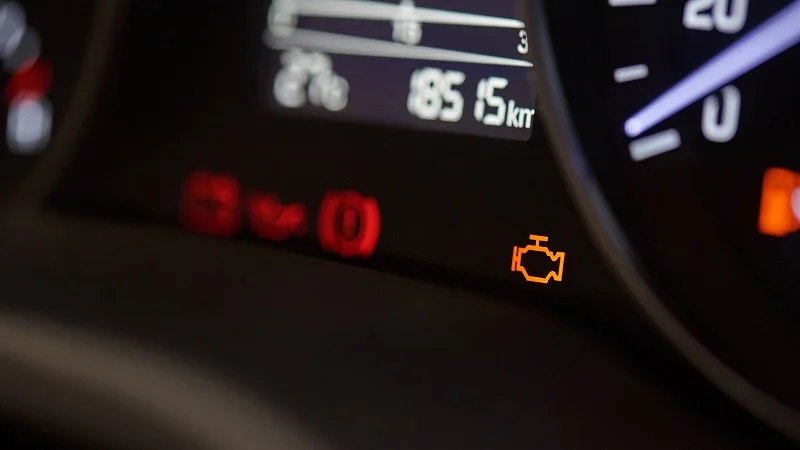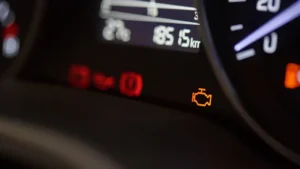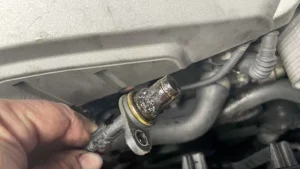
What Does the Check Engine Light Mean?
- Steady light: Usually indicates a minor problem that requires attention but is not immediately dangerous.
- Flashing light: Often signals a more severe problem, such as a misfire that can damage the catalytic converter if ignored.
- Intermittent light: This may appear and disappear, suggesting an issue that is temporary or occurs under specific conditions.
Recognizing these patterns is the first step in determining the urgency of the problem.
Top Causes of Check Engine Light Alerts
1. Loose or Faulty Gas Cap
One of the simplest and most common causes of a check engine light is a loose, damaged, or missing gas cap. This can disrupt the fuel system’s pressure, causing the light to appear. Tightening or replacing the gas cap often resolves the issue.
2. Oxygen Sensor Failure
Oxygen sensors monitor the level of unburned oxygen in the exhaust system. A malfunctioning sensor can negatively impact fuel efficiency and increase emissions. Replacing a faulty oxygen sensor can restore proper engine performance.
3. Catalytic Converter Problems
The catalytic converter reduces harmful emissions from the engine. If it is failing, the vehicle may experience reduced performance, increased emissions, or poor fuel economy. A failing catalytic converter usually requires professional inspection and replacement.
4. Mass Airflow Sensor Issues
The mass airflow sensor measures the amount of air entering the engine to ensure the proper air-fuel mixture. A malfunction can cause stalling, rough idling, or decreased fuel efficiency. Cleaning or replacing the sensor is often necessary.
5. Spark Plug or Ignition Coil Problems
Faulty spark plugs or ignition coils can result in engine misfires, poor acceleration, and rough idling. Regular maintenance and timely replacement are essential for smooth engine operation.
6. Vacuum Leaks
Understanding these common causes can help you gauge whether the problem might be simple to fix or if professional intervention is necessary.
What to Do Immediately When Your Check Engine Light Comes On
1. Stay Calm and Assess the Situation
First, don’t panic. A steady light usually indicates a non-critical issue. However, if the light is flashing, it may suggest an engine misfire, which can cause serious damage. In such cases, reducing speed, avoiding hard acceleration, and safely driving to a service center is recommended.
2. Check Basic Issues
Some problems, like a loose gas cap, are easy to address. Check the gas cap to ensure it is tight and properly sealed. If the light turns off after tightening it, the issue may be resolved. If not, further diagnostics are necessary.
3. Reduce Engine Load
Avoid towing heavy loads, driving at high speeds, or accelerating aggressively until the cause of the light is determined. This minimizes the risk of additional damage.
4. Listen and Observe
Pay attention to unusual sounds, smells, or changes in performance. Symptoms such as stalling, knocking, rough idling, or smoke from the exhaust can help identify the severity of the problem and guide mechanics during inspection.
How to Diagnose Check Engine Light Issues
1. Use an OBD-II Scanner
An OBD-II scanner can be purchased or found at many auto parts stores. By connecting it to the vehicle’s diagnostic port, you can read the stored trouble codes. Each code corresponds to a specific system or component. Understanding the code can help determine whether a quick fix is possible or professional service is required.
2. Visit a Professional Mechanic
If you’re unsure about interpreting the codes or addressing the issue, visiting a certified mechanic is the safest option. Mechanics have the experience, tools, and technical knowledge to diagnose and repair complex problems.
3. Mobile Diagnostic Services
Some regions offer mobile diagnostic services that can come to your location. This is convenient if the vehicle is not safe to drive due to a flashing check engine light.
Preventive Tips to Avoid Check Engine Light Problems
1. Routine Maintenance
Follow the manufacturer’s recommended service schedule, including oil changes, filter replacements, and spark plug inspections. Proper maintenance keeps the engine running smoothly and reduces the likelihood of sensor or system failures.
2. Fuel Quality
Use high-quality fuel to prevent carbon buildup and maintain engine efficiency. Poor fuel can damage components such as the fuel injectors and catalytic converter, triggering the check engine light.
3. Monitor Fluid Levels
Check engine oil, coolant, and other fluids regularly. Low or contaminated fluids can affect engine performance and lead to sensor errors or overheating.
4. Drive Responsibly
Avoid harsh driving habits such as aggressive acceleration, frequent short trips, or overloading the vehicle. Gentle driving helps extend engine life and reduces wear on critical components.
5. Timely Repairs
Address minor issues promptly before they escalate. Ignoring a check engine light can lead to expensive repairs, such as replacing a catalytic converter or repairing extensive engine damage.
When to Call a Mechanic for Check Engine Light Problems
- The light is flashing
- There is a noticeable loss of power
- The vehicle is overheating
- Smoke or unusual odors are present
- Engine performance is erratic or the car stalls frequently
Driving under these conditions can worsen the damage and increase repair costs. In these cases, it’s safest to stop driving and call for roadside assistance or a tow to a repair shop.
Interpreting Check Engine Diagnostic Codes (DTCs)
- P0300: Random or multiple cylinder misfire
- P0171: System too lean (fuel mixture issue)
- P0420: Catalyst system efficiency below threshold
- P0440: Evaporative emission control system malfunction
Conclusion
A check engine light should never be ignored. While it doesn’t always indicate an immediate emergency, it signals that your vehicle requires attention. By understanding the possible causes, following immediate response steps, using diagnostic tools, and practicing preventive maintenance, you can ensure your car remains safe, efficient, and reliable. Prompt action not only prevents more serious damage but also extends the life of your vehicle and maintains optimal performance. Being proactive with vehicle care is always the best strategy when a check engine light comes on.



